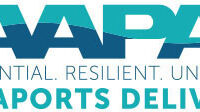5 Brazilian Port Authorities Undergoing Privatization

Five port authorities in Brazil, responsible for eight ports (Vitoria, Barra do Riacho, Santos, Salvador, Aratu, Ilheus, Itajaí and São Sebastião), are in the process of going through a privatization or divestiture process: Companhia Docas do Espírito Santo (CODESA), the Santos Port Authority (SPA) and Companhia Docas da Bahia (CODEBA), Port Itajaí and Port São Sebastião. This equates to some significant changes on the horizon – from an organizational and management perspective to infrastructure investments and efficiency. The scope of what’s involved in this process and how these ports can capitalize on it is monumental, but first some background on why this came about, who is involved, how it is being accomplished and what it means to the maritime industry in Brazil.
Port Expansion Goals Contribute to “The Why”
Brazilian legislation provides that the operation of organized ports and port facilities ought to have as its objective an increase in the competitiveness and development of the country, based on guidelines to leverage investments in the expansion of port infrastructure, thus providing greater operational efficiency to the sector and reducing costs to users.
In recent years, a lag has been observed between the expansion of public port infrastructure capacity and the growth of the sector, despite major advances in the operation and exploitation of Brazilian ports.
The complexity inherent in the operations and investments made in the port transport sector causes the government to experience difficulties in managing its various components. The contracting and procurement regulations to which the Brazilian public sector is subjected are obstacles to the efficient management of a port asset, which should be streamlined, with long-term planning and intensive investment in infrastructure.
Thus, the private sector revealed itself as an extremely important partner for improving the quality of services provided and operational efficiency, ensuring regularity, provision and maintenance of adequate port capacity,
With the port privatization process, goals include freedom, flexibility and the streamlining necessary to optimize the use of public space, with the dynamism required by the flow of trade. Gains in productivity are also expected with respect to management, efficiency and speed in the procurement and contracting necessary for the operations.
In addition, there is major potential international experience in port management that may be brought in, as can be seen in the recent concessions of transport infrastructure carried out by the federal government, such as in the air sector, for example.
The model proposed by the Brazilian government enables new operational, managerial and technological design experiences in port management to be consolidated in Brazil, encouraging investment in innovation.
Complexity Equals Kaleidoscope of Participants in “The Who”
As the privatization process is inherently complex and includes multiple stages and levels of approval with the Brazilian legal system, a number of players and institutions are involved in privatization projects. (See graphic on page 27.)
The coordination and monitoring of the activities performed in the Privatization Projects of Organized Ports are carried out by the Ministry of Infrastructure and have the support of project structuring institutions and consulting firms specializing in the sector acting on different work fronts.
The results of the studies prepared are also analyzed by other government entities participating in the process, including ANTAQ, the Ministry of Economy, Control Agencies and the respective port authorities.

1 TCU – Federal Accounting Court, i.e., “Tribunal de Contas da União.”
Continuous interaction with various local and regional leaders is also part of the process, for clarification purposes, impressions and suggestions for its improvement.
Each privatization project has its own peculiarities, thus impacting its modeling and, therefore, the length of the process.
However, to ensure adequate pricing and the legality of the privatization process, it is necessary to follow some stages common to all projects until the bid notice is published and the auction held, which can be summarized below:
Compliance with all stages takes about two years, adequate time to ensure that the process respects and meets all legal and technical requirements so that the concession of public assets is performed in the best interest of society.
“The How” Is a Model of Isonomy, Universality
The main challenge of this process is the same one that is inherent in any privatization: the paradigm shift from the provision of services by the government to the provision of services by the private sector.
Therefore, it is necessary to structure a model that preserves the isonomy and universality of service provision, in addition to maintaining reasonable fees, with incentives for a constant search for increased efficiency and excellence in the quality of the service provided.
Thus, the main challenges and concerns in the privatization process of Brazilian ports include:
- Preservation of isonomy and universality in the provision of port services.
- Keeping reasonable rates and prices, with disincentives and penalties for abusive or anti-competitive practices.
- Establishing incentives to increase the efficiency and quality of services provided by private port authorities.
- Guarantees for the performance of the investments needed for the adequate development of the ports.
- Insecurity of port stakeholders regarding the paradigm shift and its consequences.
Government, Ports to Collaborate, Share Responsibilities
Organized ports continue to be essential assets from the point of view of a national economic development strategy. Therefore, it is necessary for the government to continue to have the ability to issue general planning guidelines, committing itself to national development and creating conditions for handling cargo as efficiently as possible.
In this regard, the Ministry of Infra-structure will continue to have the authority to:
- Draft the Master Plan, taking into consideration the perspectives of transport planning at a strategic level, which aims to direct actions and investments in the short, medium and long term in ports and in access to ports, as well as in the port-city relationships.
- Approve the Development and Zoning Plan (PDZ, i.e., “Plano de Desenvolvimento e Zoneamento”), which is the port authority’s planning instrument that includes strategies and actions for the expansion and the integrated, orderly and sustainable development of organized port areas and facilities.
The National Waterway Transport Agency (ANTAQ), the sector’s regulatory body, will have the authority for any oversight and regulatory action inherent thereto. Thus, the Regulatory Agency will be responsible for:
- Overseeing port operators and terminals with respect to port operation and user protection activities, in addition to compliance with the concession agreement.
- Regulating the provision of services by the Concessionaire in the Organized Port Area, its operation and maintenance.
- Mitigating risks and allowing for remediation in the case of verification of abuse of a position or commission of anti-competitive acts by the concessionaire, as, for example, in defining tariff amounts or in negotiating for the operation of areas within the organized port.
- Mediating conflicts of interest in the area of port activities.
During the preparation of the studies for each privatization process, hired consulting firms performed a mapping of market participants potentially interested in the respective assets. In general, the main market segments identified were:
Key Players Involved in Development of Privatization Project

- Investment funds
- Transport infrastructure concessionaires
- Port sector and logistics companies
- International port management companies
- International pension funds with relevant investments in infrastructure
The phases planned in the privatization process, before submitting the material to the Federal Accounting Court, also include the Market Sounding stage, during which meetings are held with the productive sector, investors and potential interested parties to present the privatization model proposed, in order to receive contributions and subsidies and clarify any questions.
Realization of Benefits Intertwined with Other Initiatives
The positive impacts expected with the privatization of the organized ports include:
- Ensure greater freedom, flexibility and streamlining so that future concessionaires can optimize the use of public space and make the adaptations of operations that the dynamism of trade flows demands.
- Encourage inter-port and intra-port competition and market development.
- Improvement in the quality of the provision of services.
- Improvement of the port’s capacity due to greater availability of financing from the private sector for investments in infrastructure.
- Attributing to the private sector investment and management responsibilities fully compatible with its technical, operational and financial capacities.
- Closer coordination of the port operation systems between public ports and private ports, making the sector more uniform and functional.
- Incentive for the new port authority to seek increased efficiency.
- Greater professionalization of port management.
The privatization of the organized public ports is expected to increase the levels of services provided, as well as increase operational and economic efficiency, in addition to attracting new investments that, given the country’s current financial situation, would not be possible in the public sphere.
Privatization aims to guarantee investments in the ports’ common use infrastructure, such as dredging of waterway access channels and retrofitting of land access, which are necessary to improve the conditions of maintenance and the quality of the services provided to port users.
Privatization also aims to provide concessionaires with flexibility and streamlined processes so that the contracts for the operation of areas are quickly adapted to the dynamic port market and to foreign trade.
Greater efficiency is also expected in port occupancy, in view of the possibility of direct negotiation between private port authorities and those interested in operating port terminals, eliminating the lengthy and time-consuming bidding processes for these areas, currently promoted by the Ministry, due to the requirements of Brazilian legislation.
However, this initiative should not be analyzed in isolation, since, in addition to the privatization processes, various other initiatives are underway in the port sector to attract investments and improve operational efficiency, whether through leases and authorizations of private facilities, incentives for cabotage, or improvement of management at the Docas Companies.
In line with these initiatives in the port sector, various other initiatives are also underway in the other transport sectors, mainly for expanding and facilitating the participation of the private sector in the transport infrastructure, such as concessions for a greater portion of the federal road network, airports and railways, in addition to the recently implemented authorization regime for the construction of private railways, with which the country’s competitiveness is expected to increase through the reduction of logistics costs.
NEWS FLASH
The Companhia Docas do Espírito Santo (CODESA) tender, the first port privatization in Brazil’s history, was scheduled for March 25, 2022.




